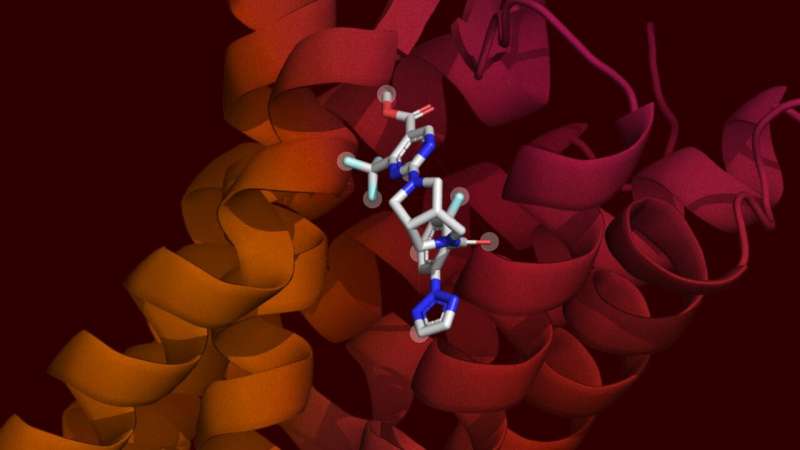Understanding how molecules interact is central to biology: from decoding how living organisms function to uncovering disease mechanisms and developing life-saving drugs. In recent years, models like AlphaFold changed our ability to predict the 3D structure of proteins, offering crucial insights into molecular shape and interaction.
But while AlphaFold could show how molecules fit together, it couldn’t measure how strongly they bind—a key factor in understanding all the aforementioned properties. That missing piece is where MIT’s new AI model, Boltz-2, comes in.
Boltz-2 breaks new ground by jointly modeling both structure and binding affinity, a critical parameter in small molecule drug discovery. Boltz-2’s affinity module was trained on millions of real lab measurements, showing how strongly different molecules bind to proteins. Thanks to this, Boltz-2 can now predict binding strength with unprecedented accuracy across several benchmarks reflecting different stages of real-world drug discovery.
In established benchmarks, Boltz-2’s predictions come very close to those produced by full-physics free energy perturbation (a precise computer simulation that predicts how strongly a drug sticks to its target, but that can take up to a day to run one test even on a GPU)—at more than 1,000 times the speed. It’s the first deep learning model to deliver that level of precision.
“This performance increase makes Boltz-2 not just a research tool, but a practical engine for real-world drug development,” says MIT CSAIL Ph.D. student Gabriele Corso. Corso, alongside fellow student Jeremy Wohlwend and MIT Jameel Clinic researcher Saro Passaro, was a lead researcher of both Boltz-1 and Boltz-2.
“Instead of spending hours simulating the interaction between a single molecule and its target, scientists can now screen vast chemical libraries within the same time frame, enabling early-stage teams to prioritize only the most promising compounds for lab testing.”
Boltz-2 will be released as fully open source under the MIT license, including model code, weights, and training data.
Boltz-1 beginnings
In early 2023, a team of researchers at the MIT Computer Science and Artificial Intelligence Laboratory (CSAIL) and the MIT Jameel Clinic for Machine Learning in Health (Jameel Clinic) launched an ambitious experiment: Could a machine learning model not only predict molecular structures, but understand how biomolecules behave—how they interact, and, most critically, how likely they are to bind—a key mechanism in drug discovery.
At the core of many diseases are misregulations in biomolecular functions. This can be mitigated, however, by designing molecules that can bind to the implicated targets. Accurately predicting this binding behavior is one of the biggest challenges in designing effective new drugs.
In 2024, that project became known as Boltz-1, an open-source model designed as a fast, accessible alternative to AlphaFold3, the state-of-the-art method in the field. Since its release, Boltz-1 has been used by thousands of scientists across leading academic labs, biotechs and pharmaceutical companies—making it the most widely used model of its kind in the industry.
Now, the same team, working with biotechnology company Recursion, unveiled the next step: Boltz-2, a major advance in AI-powered molecular modeling.
Boltz-2 improves on Boltz-1 in several key ways. The model has been retrained using a much larger and more diverse dataset, including computer simulations of molecules in motion and synthetic data made from predictions from the earlier version of the model. It also adds a new feature called Boltz-Steering, which helps fine-tune the results by using physics-based cues to make the predicted structures more realistic.
In addition to its performance, Boltz-2 has been designed for usability. The model can be guided by real experimental data, example structures, or user preferences, giving researchers more control to tailor the results to what they already know or what they’re trying to test.
“This release is especially significant for the field of small molecule drug discovery, where progress has lagged behind the rapid gains seen in biologics and protein engineering,” says Passaro. “While models like AlphaFold and Boltz-1 allowed a significant leap in the computational design of antibodies and protein-based therapeutics, we have not seen a similar improvement in our ability to screen small molecules, which make up the majority of drugs in the global pipeline.
“Boltz-2 directly addresses this gap by providing accurate binding affinity predictions that can dramatically reduce the cost and time of early-stage screening.”
Passaro and Corso worked on Boltz-2 alongside MIT Professors and CSAIL Principal Investigators Regina Barzilay and Tommi Jaakkola, Wohlwend, and a team of researchers at MIT and Recursion.
More information:
On GitHub: github.com/jwohlwend/boltz
Provided by
Massachusetts Institute of Technology
Citation:
Protein-binding affinity model expands role of AI in drug discovery (2025, June 9)
retrieved 9 June 2025
from https://phys.org/news/2025-06-protein-affinity-role-ai-drug.html
This document is subject to copyright. Apart from any fair dealing for the purpose of private study or research, no
part may be reproduced without the written permission. The content is provided for information purposes only.

